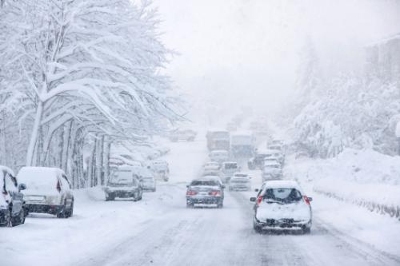Can Your Car Weather the Storm?
 |
BETHESDA, MD -- Dec. 16, 2014: While last year's brutal winter may seem like a distant memory, severe weather is on its way. The Car Care Council reminds drivers to ready their vehicles for the rough conditions ahead.
"Vehicle service is always more convenient when you do it on your own schedule. An investment of an hour or so to have your vehicle checked will help make sure it can weather the storm when arctic temperatures strike again," said Rich White, executive director, Car Care Council.
Because preventative maintenance helps avoid the hassle and cost of an emergency breakdown, the Car Care Council recommends the following steps to winterize your vehicle:
Check the battery and charging system for optimum performance. Cold weather is hard on batteries.
Check the antifreeze. As a general rule of thumb, clean, flush and put new antifreeze in the cooling system every two years.
Check that heaters, defrosters and wipers work properly. Consider winter wiper blades and use cold weather washer fluid. As a general rule, wiper blades should be replaced every six months.
Check the tire tread depth and tire pressure. If snow and ice are a problem in your area, consider special tires designed to grip slick roads. During winter, tire pressure should be checked weekly.
Check the oil and filter and be diligent about changing them at recommended intervals. Dirty oil can spell trouble in winter. Consider changing to "winter weight" oil if you live in a cold climate. Have your technician check the fuel, air and transmission filters at the same time.
Check engine performance before winter sets in. Winter magnifies existing problems such as hard starts, sluggish performance or rough idling.
Check the brakes. The braking system is the vehicle's most important safety item.
Check the exhaust system for carbon monoxide leaks, which can be especially dangerous during cold weather driving when windows are closed.
Check to see that exterior and interior lights work and headlights are properly aimed.
During winter, drivers should keep their vehicle's gas tank at least half-full to decrease the chances of moisture forming in the gas lines and possibly freezing. Motorists should also check the tire pressure of the spare in the trunk and stock an emergency kit with an ice scraper and snowbrush, jumper cables, flashlight, blanket, extra clothes, bottled water, dry food snacks and needed medication.


